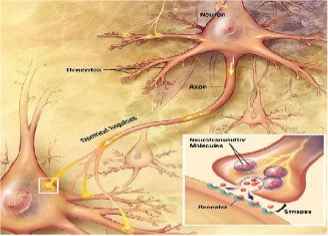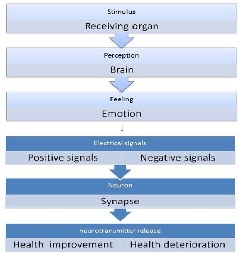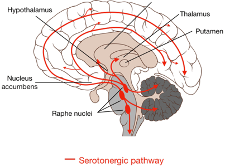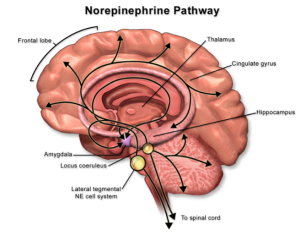It is involved in: Main dopamine pathway in the brain
- the brain’s reward system, which generates the feeling of pleasure, and acts as the brain’s “feel good”
- motivation,
- addictions (Tortora & Derrickson, 2014).
- coordinating body movements (motor functions of the body)
It has the capability to act as either an inhibitory or excitatory neurotransmitter, depending upon the particular site it binds to, and can alter our emotional states.
As dopamine levels are increased when we take part in activities that bring us satisfaction and pleasure, too high of a level can become detrimental for our health. Disproportionate higher levels can cause us to become hyper-stimulated to our surrounding environment or cause a disrupted thought, which are all characteristics of schizophrenia.
Dopamine’s dysfunction is involved in psychiatric disorders, including drug addiction, schizophrenia, Parkinson’s and Huntington’s disease. (Niyonambaza et al, 2019). For instance, Parkinson’s disease, which is a degenerative disease that results in tremors and motor movement impairments, is caused by the loss of dopamine-generating neurons in the brain.
Low levels of dopamine are associated with a lack of focus, cognitive problems such as memory and learning deficits, compulsions, addiction, and a loss of satisfaction in previously enjoyable activities. This can have a substantive impact upon an individual’s emotional state.





